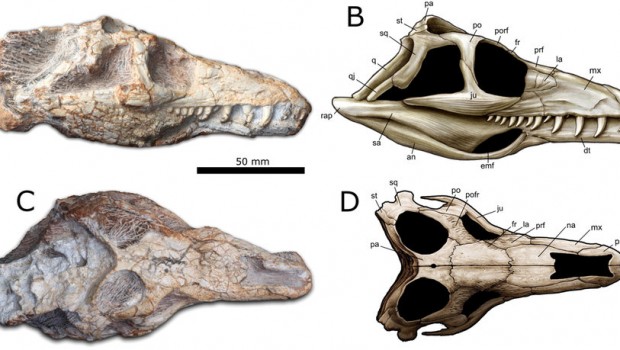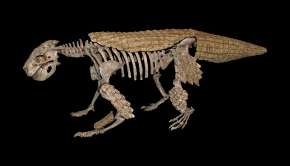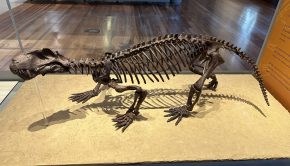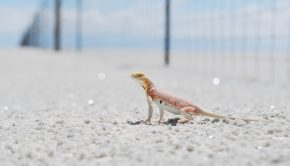New Triassic reptile from Brazil
Archosauriforms are some of the most well studied fossils in existence, including birds, crocodiles, dinosaurs, pterosaurs, and their ancestors, first originating in the early Triassic. While this group has always been well studied, our understanding of their early evolution and origins remains clouded, primarily limited by a lack of Early Triassic fossils and transitional fossils. Last week, a new Early Triassic reptile from Brazil was named by Felipe Pinheiro (Universidade Federal do Pampa, São Gabriel, Brazil) and colleagues in the journal Scientific Reports. This new species, Teyujagua paradoxa, is known only from a well preserved skull and presents a number of important features important in understanding early archosauriform evolution.
Lead author Dr. Pinheiro had this to say about Teyujagua: “A couple of years ago, me and my students started looking into what happened after the “end of the world”, that is, the recovery of diversity that followed the end-Permian extinction, a cataclysmic event that wiped out around 90% of all species of that time. For this, we started digging up rocks of Early Triassic age (around 250 million years ago). In one of those fieldworks, we found a beautifully preserved skull, still associated with some cervical vertebrae. Even in the field it became clear that we had a complete skull of a completely unknown species in our hands. It’s funny that the fossil was only found because one of my students literally stumbled upon it. We took the specimen to the lab and, after slowly cleaning up bones and removing the rock, we realized that the fossil was even better than we expected. It showed a transitional morphology between primitive reptiles and the archosauriforms, an exceptionally diverse group that includes dinosaurs, pterosaurs, birds and crocodiles. We named the new animal Teyujagua paradoxa. The generic name can be literally translated from the Guarani language as ‘fierce lizard’, and makes reference to Teyú Yaguá, a mythological beast represented by a lizard with a dog’s head. Teyujagua is an interesting piece in the puzzle of the early origins of archosauriforms. It tells us how the typical archosauriform skull evolved, demonstrating that features related to carnivorous diet, such as serrated teeth, appeared before other secondary characters. Also, it tells us that the group that would later evolve into birds, dinosaurs, pterosaurs and crocodiles had a rather modest early evolution. Teyujagua and early archosauriforms were small, generalist animals, that had an almost empty world to colonize and diversify. Our work in the fossil site that wielded Teyujagua is still ongoing, and we’ve already recovered several new fossil specimens that will probably add to the knowledge of how life recovered after ‘the Great Dying’ to, ultimately, evolve into the modern diversity.”
Teyujagua is thought to be just outside of Archisauriformes, the sister taxon to this group, making it important in understanding how archosauriforms evolved from this group. It shows a mosaic of archosauriform and more basal archosaurimorph characteristics. Features surrounding the temporal and antorbital fenestra (holes in the skull) are more basal, while features of the teeth and lower jaw are more representative of archosauriforms, which were important in their evolution as major carnivorous animals.
As field work is still being done in this area, hopefully more finds of this nature will occur and a better understanding of early archosauriform evolution will be gained!
Image from Pinheiro et al. 2016, artwork by J. Anderson.


















